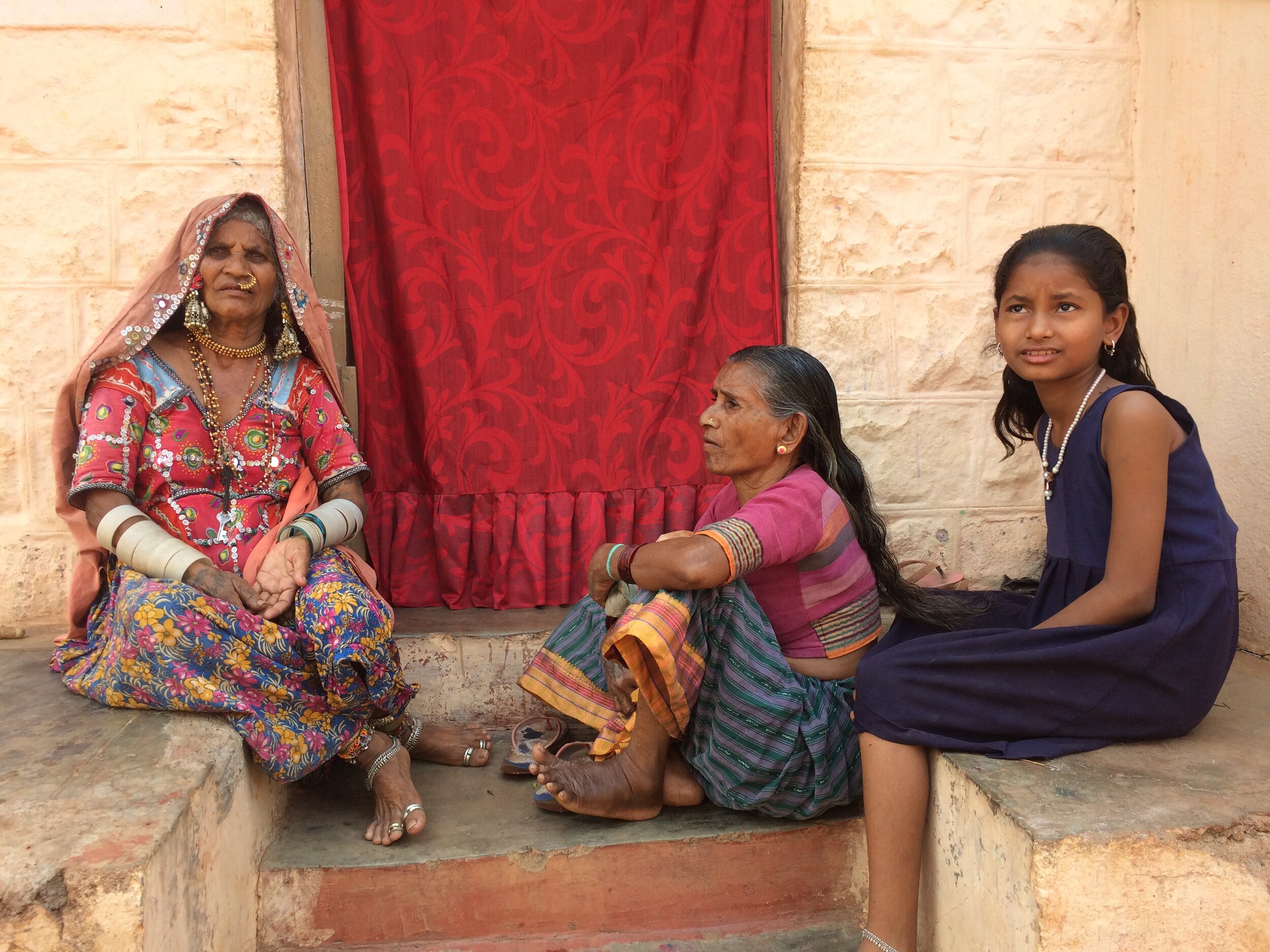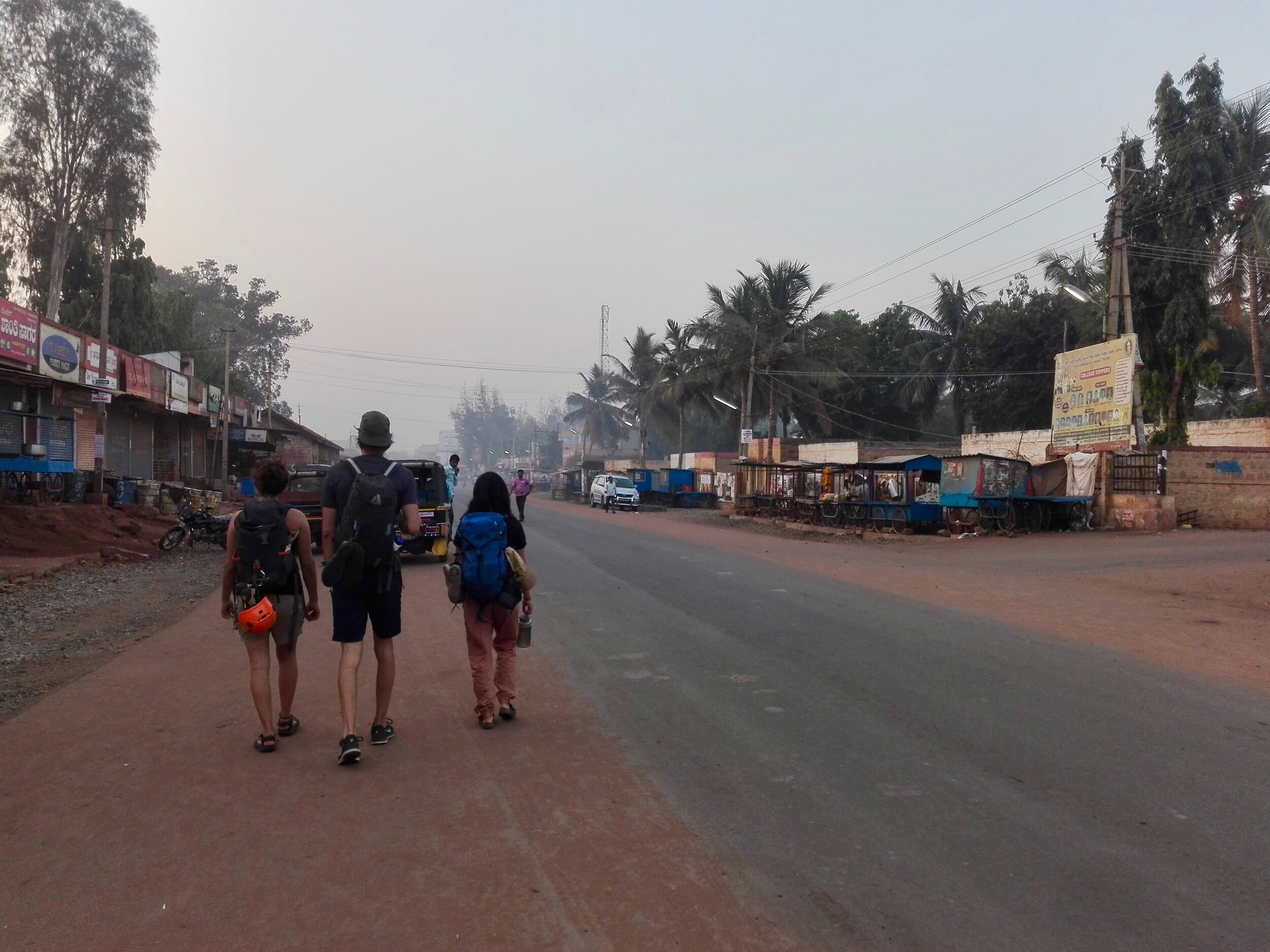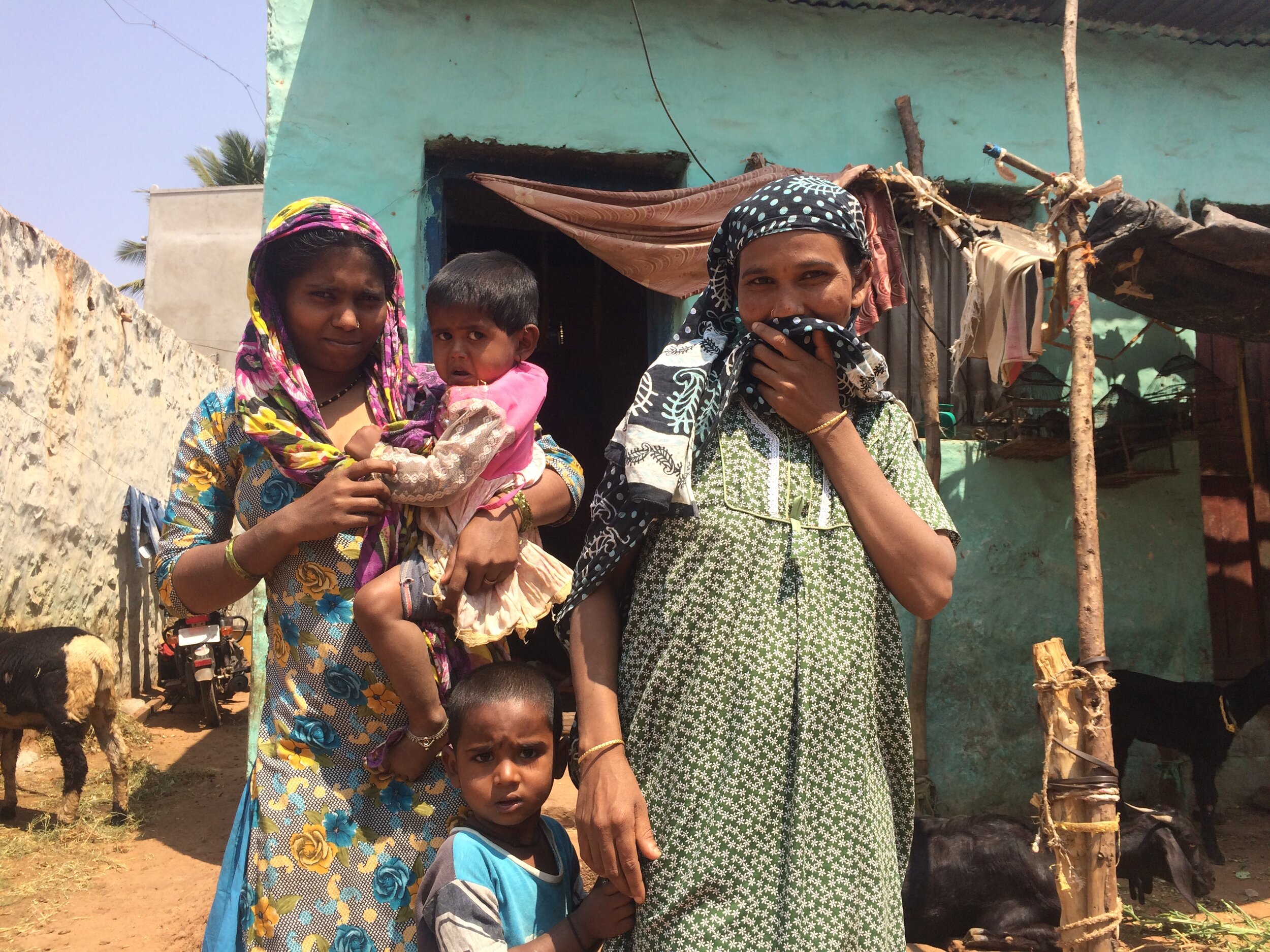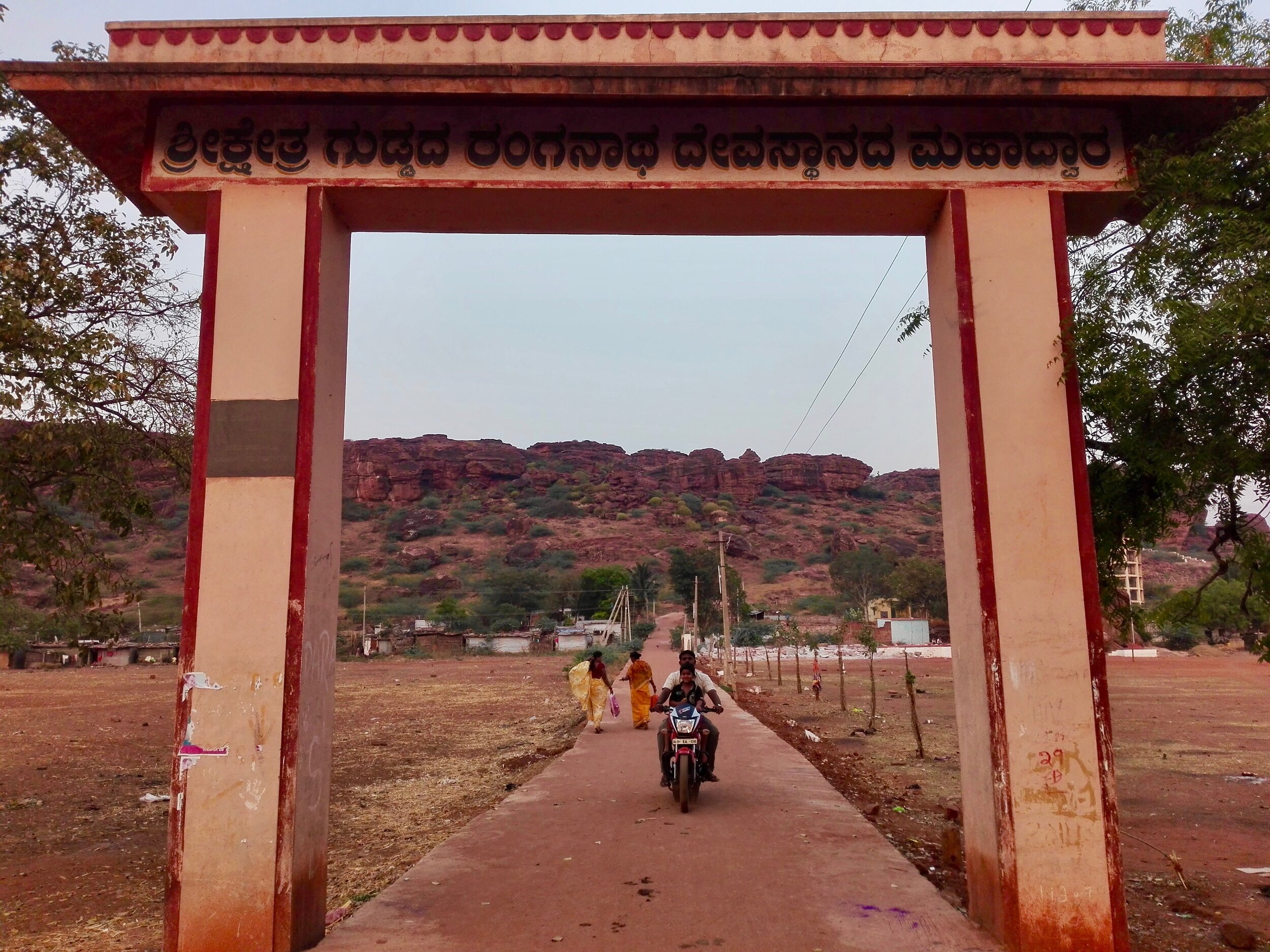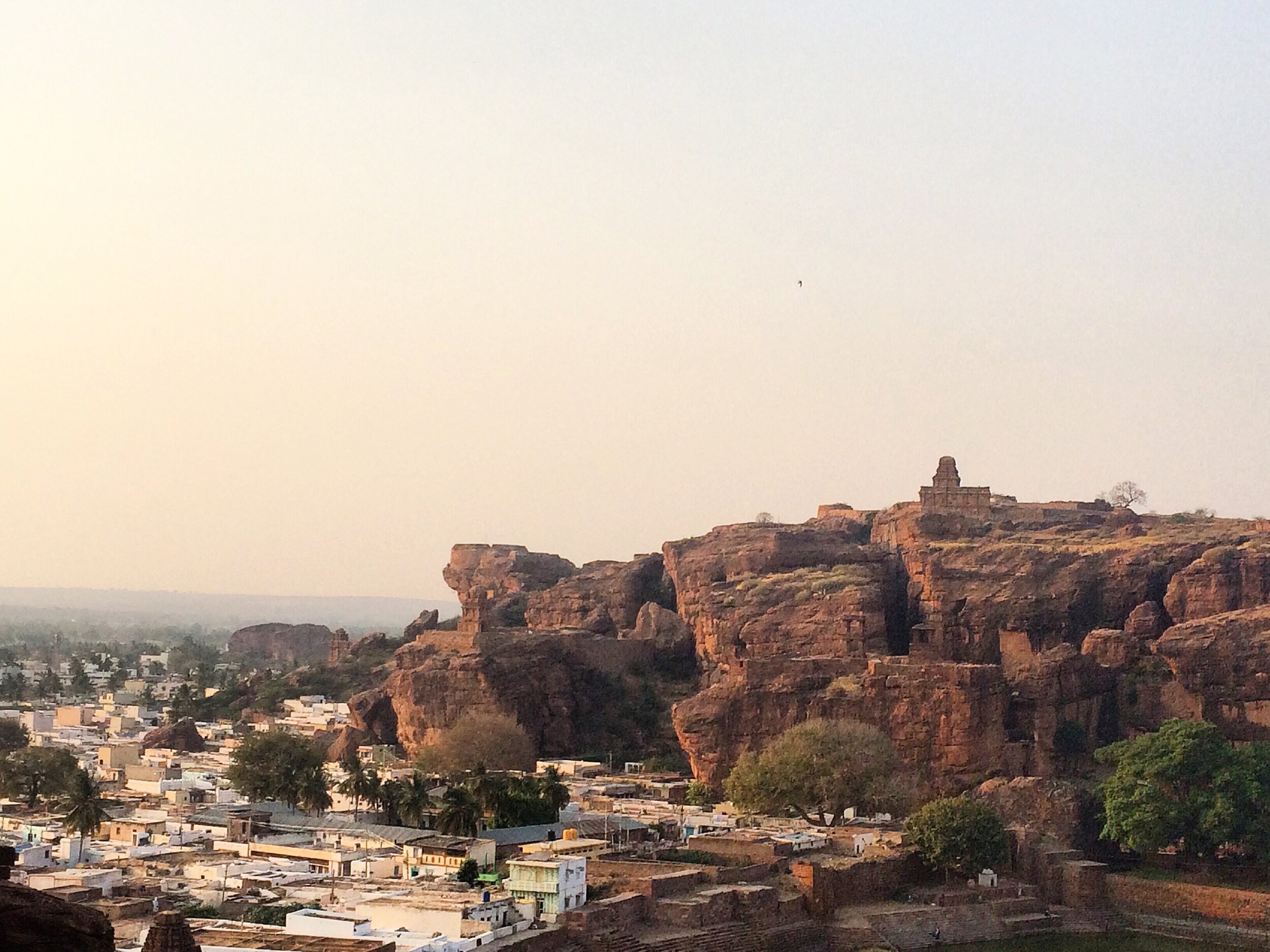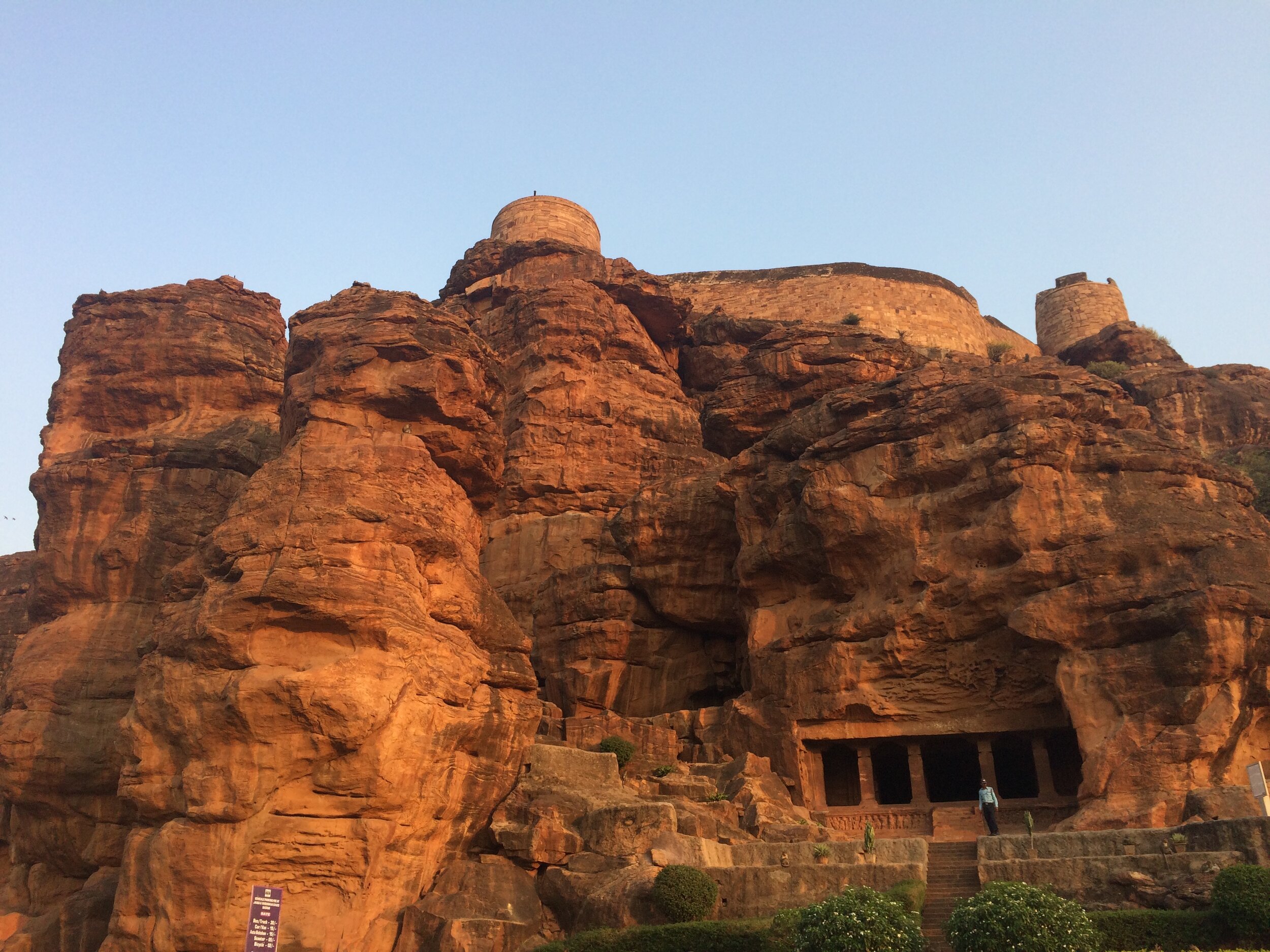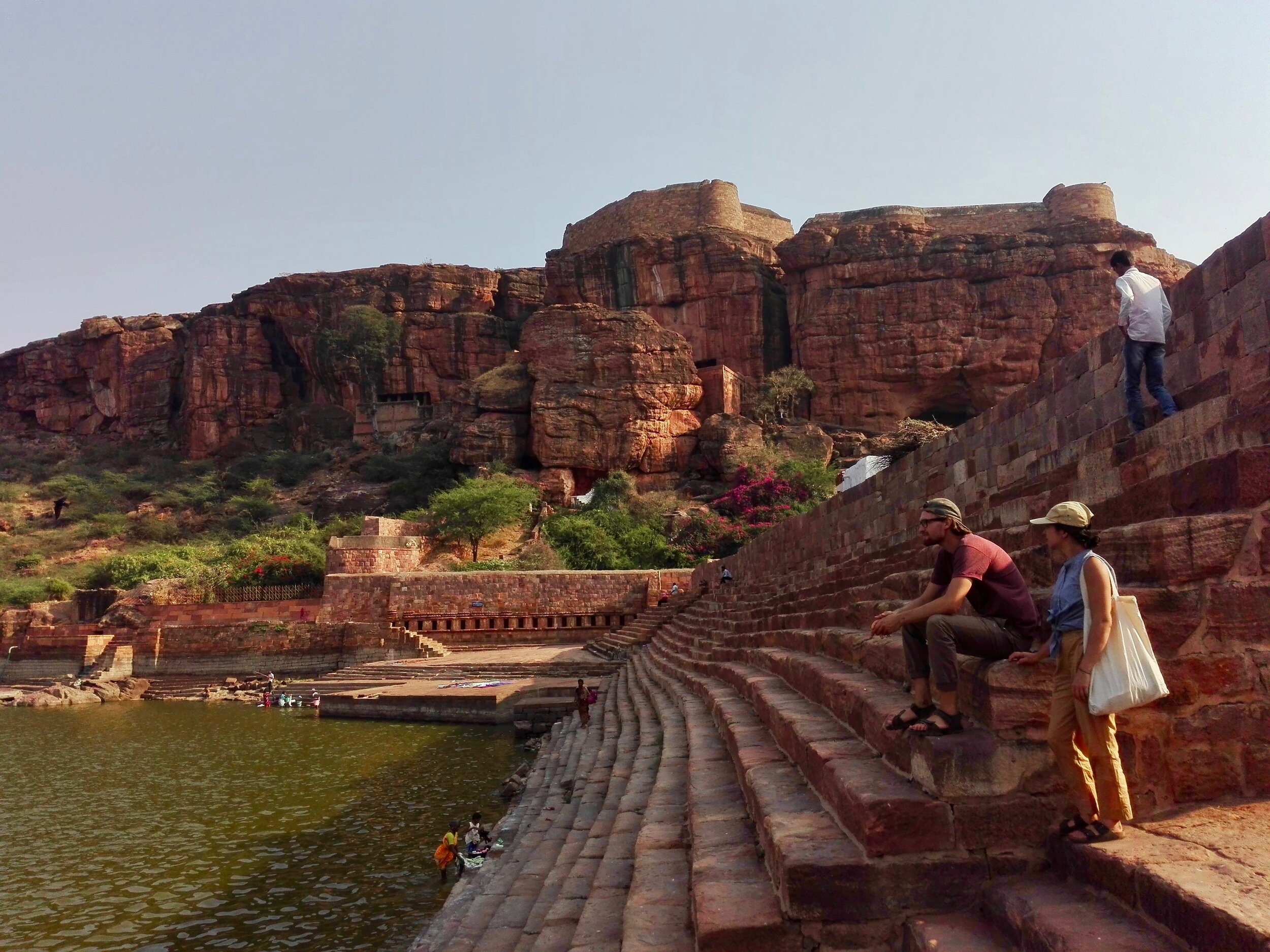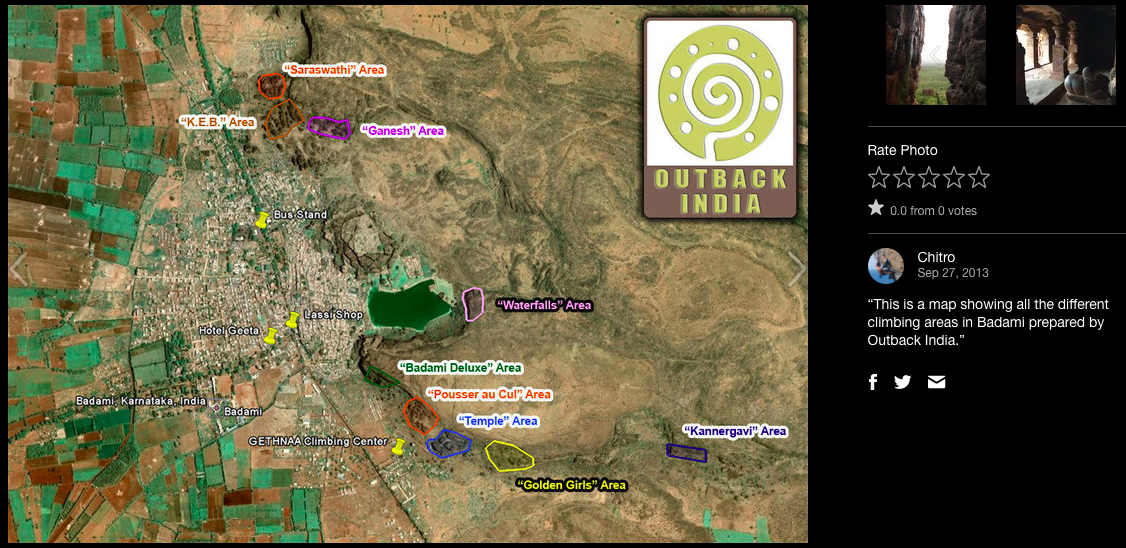Off the Beaten Crag in Badami
I’d been melting into my seat on a local bus for four hours when our friend from Hampi, Tyler, started pointing excitedly out the open window. The first signs of our intended destination had appeared. It wasn’t the ‘Badami - 12 km’ road sign that excited us, but the rust coloured escarpment rising ahead. We were chasing rumours of a hidden sandstone crag.
We were deposited at a small bus stand in the centre of a dusty Indian town. Thus began our quest for Hotel Relax. After triple-checking the spot our phone maps said it should be, and after having two separate rickshaw drivers take us to their interpretation of ‘Hotel Relax’ kilometres away, we ended up at a hotel right across the bus stand. The mood was lightened when a boy on a bicycle stopped to ask me what my village was called. “Canada!” I laughed in reply.
For dinner, the concierge sent us to Krishnabhavan a few doors down. With four small tables, the hotel (restaurants are called hotels here!) certainly fits the description of a hole in the wall. We chatted while the owner arranged the flower offerings and incense of a small shrine in the corner. Just as we dared ask for menus, four large silver platters arrived. A thali is an assortment of dishes that offer a balance of the 5 elements (in Ayurvedic practice, they are ether, air, fire, water, earth) corresponding with the 6 tastes (sweet, sour, salty, pungent, bitter, astringent). Elements aside, they’re delicious. Just as the last bites of pickled beetroot and dal disappeared, the owner served seconds, and then thirds. “Chapati, chapati, chapati, chapati?” he asked each of us intently. Mouths full and hands saucy, we nodded a universal ‘yes’ realizing the food was unlimited! We paid the bill ($1.50 each) and poked our heads into the kitchen—a cavernous room dimly illuminated by a cooking flame—revealing a scattering of women crouching low, chopping vegetables and coaxing more chapatis to life. We thanked them with smiles and clasped hands, “Namaste!”
It was 6am when we met in the lobby the next morning, eager to climb. But first—coffee. We walked the main drag, past sleeping cows, until we found a bakery and coffee stand. Our 70 cent breakfast was a loaf of sweet bread and 8 tiny coffees (one to sip, one to dip!). Buzzing from a combination of caffeine and climbing stoke, we made our way to the Temple area and up its iconic steps. We spotted the first bolts and played connect-the-dots with chalked holds, our excitement rising as high as the new lines we traced. We heard the familiar click of quickdraws echo in the canyon and Ganesha (local guide and guru) suddenly appeared. Just a few minutes later, I had topped out on one of the prescribed warmup routes, counted each beautiful layer of sediment along the way, and forgot about the curious monkeys that had gathered around my belayer below—I’d just climbed my first bit of sandstone!
For the next three days, we fell into a rhythm of eating, sleeping, and climbing. All our refuelling took place at a family restaurant called Sri Veerbhadreshwar, introduced to us by newly acquired Indian climber friends Vinay and Prerna. Each 80 rupee lunch (that’s all-you-can-eat for $1.50) felt as if we’d been welcomed into a home, especially when I found myself huddled with three ladies in the kitchen chopping onions and jotting down the family recipe for brinjal chutney.
It must have been their magic curry that let us push our limits. While I had only completed one 5.11a (6b+) last summer, running the crags of Badami with more experienced sport climbers gave me the chance to top rope a 5.12d (7b). “You’re on belay,” Tyler said as I started up the route called Honeymoon. I silently set a goal to at least reach the first crux (in climbing, a crux is the hardest part of a given route—and this route had a few!). A few balancy moves later, I arrived at a ledge, shook my arms out, and went for the crux ‘cuz why not. I fell—but it looked so much more doable than it had 20 feet below. A few more falls and I was through to the next cruxy moves, and a few whips after that, I’d hit the third crux dyno. By that point, I was pumped as hell and just happy I’d made it that far. “Ok I’m good to come down!” I called, but Tyler pointed out that the topout was just over my head. With a burst of summit fever, I sailed through the last few moves and topped out the hardest route on my ticklist feeling warm and fuzzy inside — unlike the route we renamed ‘Sex Panther’ (see photo gallery) Honeymoon was aptly named. [Honeymoon featured in far right photograph below—just before dyno.]
Aside from the use of a lungi (a sarong-like garment worn traditionally by men) as a makeshift rope mat and a couple of local youngsters keen to learn knots, being enveloped by nature and engrossed in climbing made it easy to forget we were in India. Yet our short commute between town and crag was always a unique experience. Winding through small villages, we were often met by curious locals and waving children asking for school pens. A brightly adorned Lambani woman in traditional garb regarded our clothes with a head bobble. Bright laundry, aimless chickens and pet goats added to the sights and sounds (and smells). These brief but memorable interactions—some as fleeting as a shy smile—infused us with a sense of the community, and a sense of climbing off the proverbial beaten path.
Despite some recognition for India’s toughest bolted route Ganesh (5.14a), Badami remains a fairly well-kept secret. Even its locals, who eyed our gear and attire curiously, seem largely unaware of the incredible routes hidden amongst the cliffs, overlooking their homes. Sharing a post-climb lassi, Luke and I mused about the future of Badami—would climbers converge on this paradise? Would the souvenir shops seen in Hampi spring up, irrevocably changing these genuine and untouched villages? Could a commune of dirtbag climbers bring a new type of spirituality to Badami, or would that somehow harm the fabric of the community?
For centuries, these cliffs have been a place of spiritual worship. Buddhist temples were carved into the rock 1500 years ago, and continue to to attract pilgrims from India’s furthest corners. Tyler, Andrea, Luke and I made an obligatory visit to these caves on our last afternoon. The four of us sat on a bench with an unobstructed view of the cave but our necks were craned up, our arms pointing haphazardly skyward, as we plotted routes that would never be (legally) climbed at the site, a UNESCO contender.
In addition to the future of Badami and our footprint as travellers, unemployment and rootlessness had been weighing on our minds despite us having chosen this big adventure for ourselves. Yet in discovering new boulders in the dark of early morning, in pooling beta to unlock a sequence and in sharing a crash pad and conversation as the sun set, I was reminded that I could feel ambition outside the office, that I could feel at home in a dusty place that resembled Mars—it’s having people to plot adventures with that makes all the difference.
Dedicated to the spotters and belayers we now call friends, for infusing this trip with laughter, bad puns, and good vibes.
BADAMI BETA
Accommodations: The Rajsangam Hotel in Badamai gives a ‘climber discount’.
Food: Sri Veerbhadreshwar is bomber. Krishnabhavan is worth a visit too.
Climbing Guide: Get in touch with Genesha Waddar
Classics Climbs: Ganesha 8b+/5.14, Master of Biscuits 6a+/5.10b, Finger Loop 7a/5.11d, Honeymoon 7b/5.12b Export Reject 7b+/5.12c
Also fun: Grey Chair (aka Sex Panther) 6b/5.10c. There are too many cruisey 6’s (5.10’s) to list.
SCAN EVERY ROUTE before you climb. We found many routes missing bolts (often the first), as they apparently tend to get stolen. Finger Loop was missing one of two anchor bolts—be aware of this before you opt to climb the route. Also note that unlike the crags of BC, chains are uncommon (we didn’t come across any).
iPhone photos because my camera charger fried.

